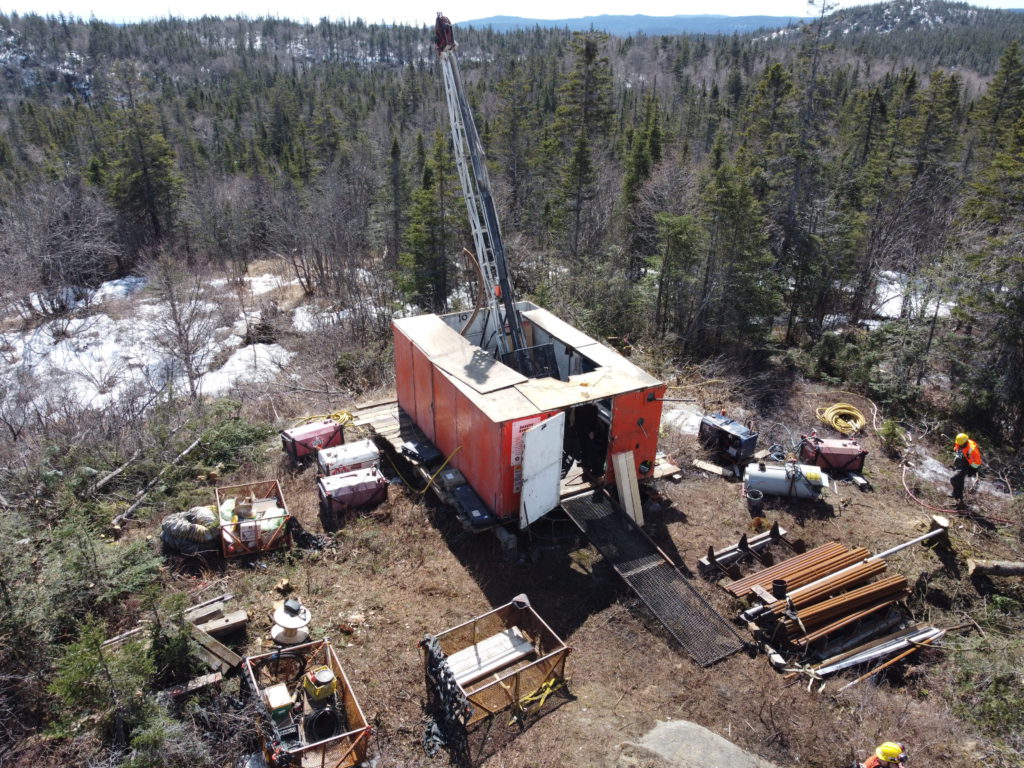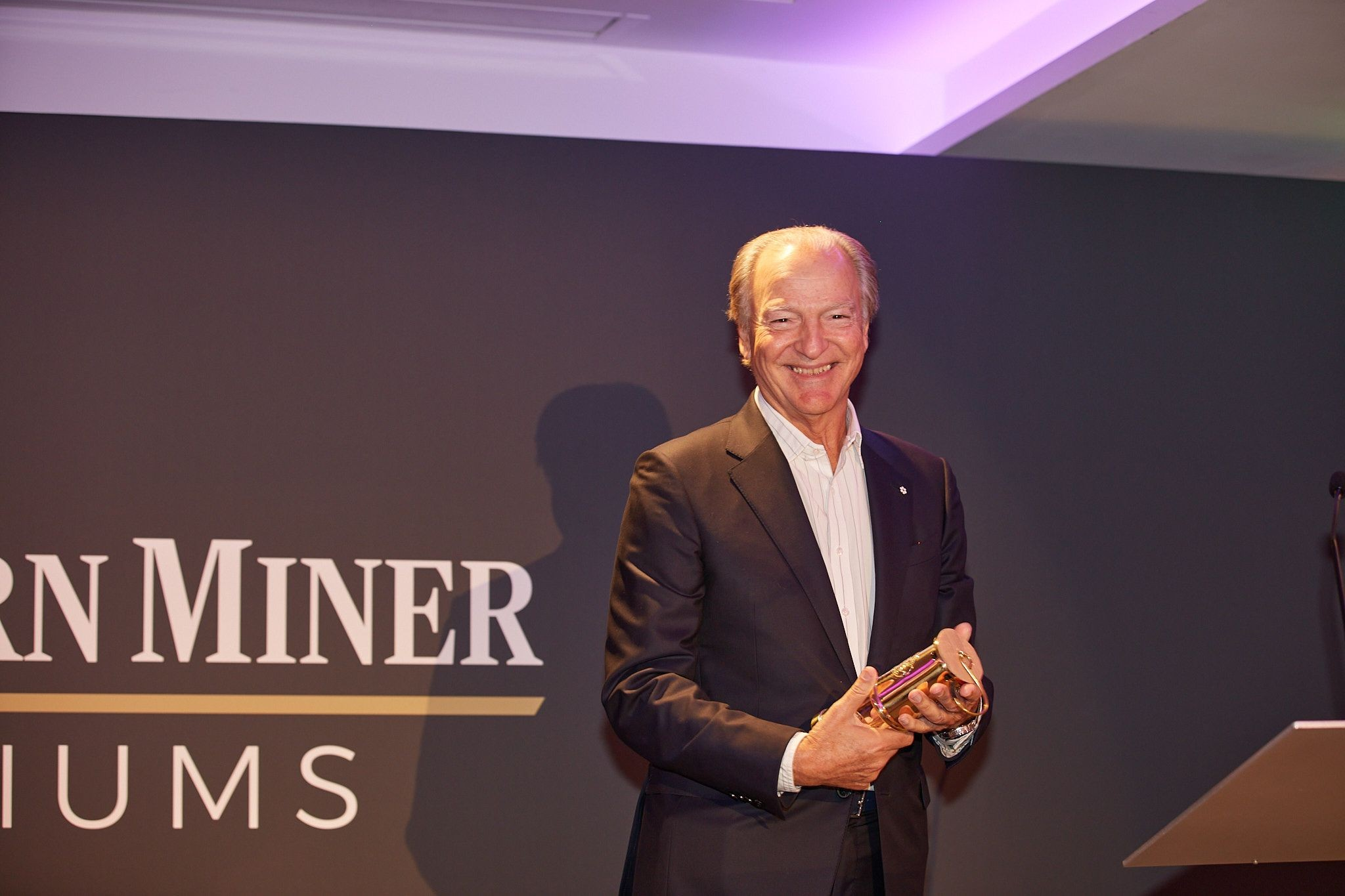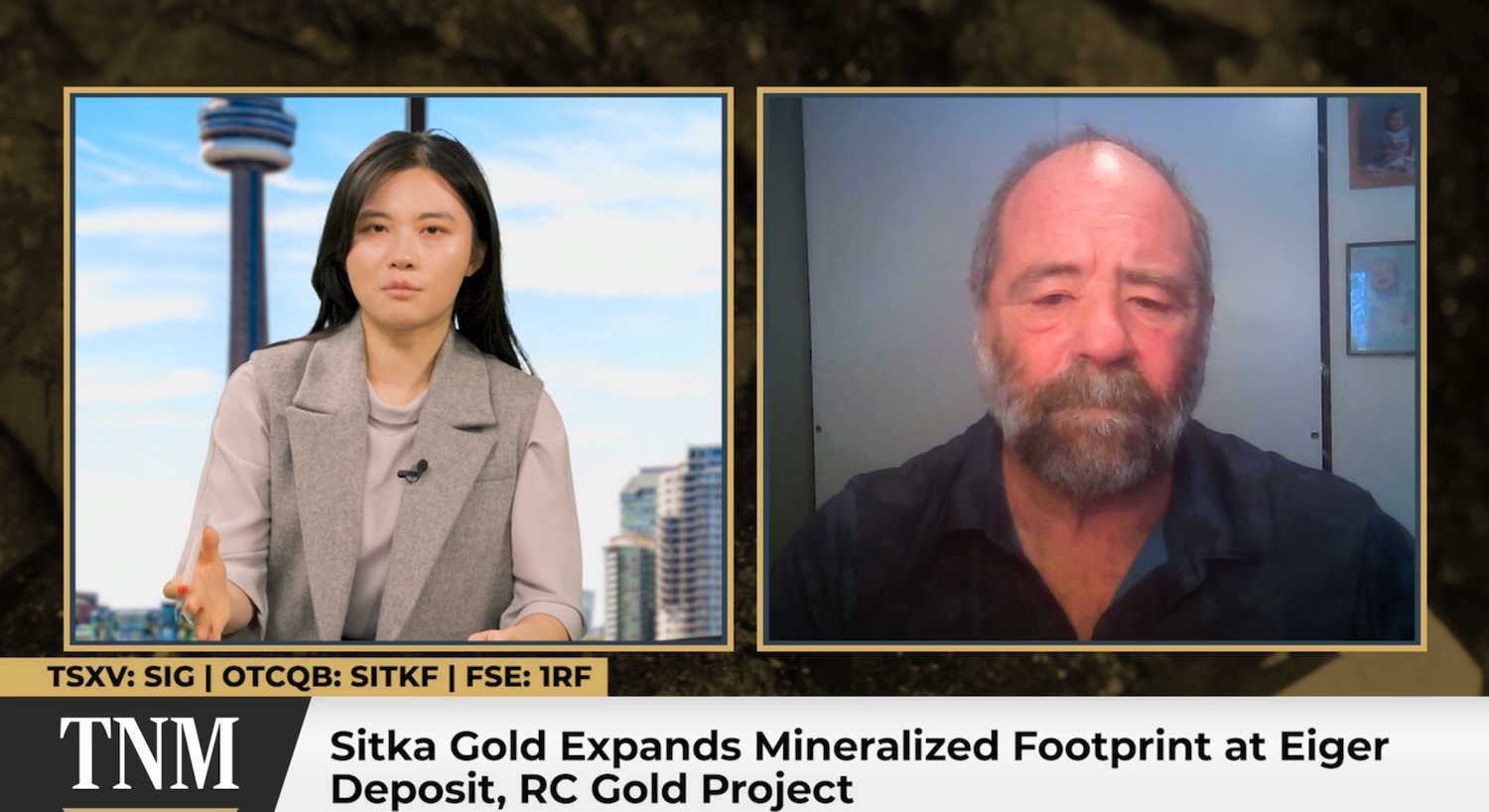Crawford, 42 km north of Timmins, contains the second-largest nickel reserves in the world with 1.72 billion proven and probable tonnes grading 0.22% nickel, 0.013% cobalt, 0.014 gram palladium per tonne, 0.009 gram platinum, 6.44% iron, 0.57% chrome and 1.61% brucite.
A 2023 bankable feasibility study outlined total production of 1.6 million tonnes nickel, 58 million tonnes iron and 2.8 million tonnes chrome over a 41-year mine life at an all-in sustaining cost of US$1.54 per lb. nickel.
In March, the company completed front end engineering design. The work focused on updating initial capital costs using data collected from a winter geotechnical program, a test piling program and updated quotes.
The mine plan was also re-sequenced to accelerate delivery of higher value ore from the East Zone and reduce pre-stripping by 30%. Compared to the feasibility study, initial capital costs rose by 5% to $2.1 billion (C$2.92 billion), while Crawford’s net present value (at an 8% discount rate) rose by $335 million to $2.81 billion. Its internal rate of return (IRR) gained 0.5% to 17.6%.
The company has consolidated more than 20 ultramafic targets with 25 times Crawford’s 1.6-sq.-km geophysical footprint. It completed resource estimates last year on two of eight additional targets and expects to finish all eight by mid-2025.
In February, the company was selected for $3.4 million in Canadian federal funding to support its proprietary In-Process Tailings (IPT) pilot carbonation process for Crawford.
In January, it received $500,000 from the Ontario government’s Critical Minerals Innovation Fund to support the development of a nickel processing facility through its subsidiary NetZero Metals. The company estimates Crawford will produce 2.3 tonnes of carbon dioxide per tonne of nickel-equivalent production, 89% lower than the industry average of 34 tonnes CO2.
Investors include Agnico Eagle Mines (TSX, NYSE: AEM), which holds an 11% stake, Samsung SDI (8.7%), Anglo American (LSE: AAL) (7.6%) and the Taykwa Tagamou Nation (8.4% on conversion).
Canada Nickel has a market cap of about $177.13 million.
Generation Mining
Generation Mining (TSX: GENM; US-OTC: GENMF) forecasts that its Marathon copper-palladium project in northwestern Ontario will produce enough copper to manufacture about 2.8 million electric vehicle batteries over its 12.5-year mine life.
An updated feasibility study on the open-pit project completed at the end of March outlined average annual payable metal of 42 million lb. copper, 168,000 oz. palladium, 38,000 oz. platinum, 12,000 oz. gold and 240,000 oz. silver at life-of-mine all-in sustaining costs of $2.05 per lb. copper-equivalent or $781 per palladium-equivalent ounce.
Marathon’s after-tax net present value (at a 6% discount rate) was estimated at C$1.07 billion and its IRR at 28%, based on three-year trailing average metal prices as of Nov. 1. Initial capital of C$992 million could be repaid in 1.9 years.
The project hosts 244.1 million pit-constrained measured and indicated tonnes grading 0.51 gram palladium, 0.2% copper, 0.17 gram platinum, 0.06 gram gold, and 1.6 grams silver. Inferred resources add 29.8 million tonnes averaging 0.39 gram palladium, 0.22% copper, 0.1 gram palladium, 0.05 gram gold and 1.4 grams silver.
The project is fully permitted for construction federally and is waiting approval on its last permit from the Ontario government.
The 260-sq.-km project, 10 km from the town of Marathon, is near the Trans-Canada Highway and is served by the CPR’s main rail line. A new 230 kilovolt power line from Wawa to Thunder Bay crosses the property.
Key shareholders include Sibanye-Stillwater (NYSE: SBSW; JSE: SSW) (14%), Wheaton Precious Metals (TSX: WPM) (7.6%) and Eric Sprott (6.9%).
Generation Mining has a TSX market value of $36.7 million.
Goldshore Resources
Goldshore Resources (TSXV: GSHR; US-OTC: GSHRF) plans to complete a preliminary economic assessment (PEA) before the end of June for its Moss gold project. Moss is about 100 km west of Thunder Bay.
In April the company expanded its winter drill program by 5,000 metres to 20,000 metres after reporting assay results from the Southwest zone in mid-March.
Highlights from five drill holes included 25 metres grading 0.68 gram gold from 133 metres downhole in drill hole MMD-25-140, and 5.15 metres grading 2.68 grams gold from 136 metres in MMD-25-147, including 2.35 metres of 5.19 grams gold.
Results from drill hole MMD-24-139 released in February extended gold mineralization with increased grades 150 metres below the conceptual open pit resource, with intercepts of 20.55 metres of 2.58 grams gold starting from 458.2 metres depth, including 14.7 metres of 3.52 grams gold.
The company has invested over $60 million in the project and completed about 80,000 metres of drilling.
Moss hosts 38.96 million indicated tonnes grading 1.23 grams gold for 1.54 million oz. contained gold and 146.24 million inferred tonnes grading 1.11 grams gold for 5.19 million ounces.
The resource estimate encompasses 3.6 km of a 35-km-long mineralized trend, and remains open at depth, along strike and through parallel structures.
The project has direct access to the Trans-Canada Highway and is near hydroelectric power.
Goldshore Resources has a TSX market cap of $104.8 million.
Laurion Mineral Exploration
In March Laurion Mineral Exploration (TSXV: LME; US-OTC: LMEFF) kicked off a Titan DCIP and magnetotellurics geophysical survey at its 57-sq.-km. Ishkõday project, about 220 km northeast of Thunder Bay. The survey is to provide high-resolution data to depths of 1.5 to 2 km and focus on the area around two past-producing mines on the property, Brenbar and Sturgeon River.
The Sturgeon River and Brenbar mines, about 1 km apart, were active in the 1930s and 1940s. Sturgeon River produced 73,738 oz. gold and 15,922 oz. silver from 145,123 tonnes grading 17 grams gold and 3.12 grams silver; while 134 oz. gold from 46 tonnes averaging 82.5 grams gold was mined at Brenbar.
Laurion has delineated a 6-km by 2.5-km mineralized corridor that encompasses both mines. Underground development at Brenbar was confined to a 64-metre-deep shaft and drifts at the 31-metre and 61-metre levels, with numerous exposed quartz veins up to 1 metre in width. At the Sturgeon River mine, historical workings extended down to 685 metres.
The company is planning to drill 7,000 to 10,000 metres this year. Highlights of ilast year’s drill program include 0.55 metre grading 186 grams gold within a broader interval of 3.5 metres of 29.5 grams gold starting 172.5 metres downhole in drillhole LME23-032; and 1.2 metres grading 17.47 grams gold from 55.8 metres, including 37.7 grams gold over 0.5 metre in LME4-055.
Hole LME24-049 returned 1 metre grading 6.6 grams gold within a broader interval of 3.5 metres grading 2.08 grams gold from 711 metres depth; and LME24-052 cut 5.25 metres grading 7.3 grams gold from 32 metres, including 0.5 metre grading 68.5 grams gold..
Laurion has a market cap of about $94.4 million.
Mayfair Gold
Mayfair Gold (TSXV: MFG; US-OTC: MFGCF) is focused on its Fenn-Gib project in northern Ontario, about 80 km east of Timmins.
The company expects to complete a prefeasibility study on Fenn-Gib by the end of this year. The PFS will focus on a 4,800-tonne-per-day open pit development scenario. Last September, Mayfair updated the project’s resource estimate with 69 new drill holes for a total of 46,955 metres of mostly infill drilling.
Fenn-Gib hosts 181.3 million indicated tonnes grading 0.74 gram gold for 4.31 million contained oz. and another 8.92 million inferred tonnes averaging 0.49 gram gold for 141,000 oz. contained gold. The resource used a cut-off grade of 0.3 gram gold per tonne.
Gold mineralized zones remain open at depth and along strike to the east and west. The Fenn-Gib deposit has a strike length of over 1.5 km with widths ranging over 500 metres.
Metallurgical tests have demonstrated that Fenn-Gib can deliver gold recoveries of up to 94%. The company has also begun additional test work to refine its understanding of the optimal feed and grind sizes and to test them across a range of lithologies, grades and zones within the pit.
Earlier this year the company announced senior management changes. In January it appointed Nicholas Campbell, its vice-president of capital markets, as its new CEO. In February, it appointed Drew Anwyll as Mayfair’s new chief operating officer. Anwyll has worked for companies including Generation Mining, Detour Gold, Barrick Gold and Placer Dome.
The project is about 10 km west of McEwen Mining’s (TSX, NYSE: MUX) Black Fox mine and 40 km east of Agnico Eagle’s Holt mill.
Management and insiders own 39% of the company.
Mayfair Gold has a market cap of about $175 million.
NexGold Mining
NexGold Mining (TSXV: NEXG) expects to complete a feasibility study on its Goliath project in northwestern Ontario in this year’s second quarter. The 330-sq.-km gold project 20 km east of Dryden, consists of the Goliath, Goldlund and Miller deposits.
The company kicked off a 25,000-metre drill program last August. In the first stage, 4,000 metres was to be drilled between the Goliath and Goldlund deposits, and in the second stage, the drills are to target the eastern extent of the Goliath deposit.
A March 2023 prefeasibility study outlined an open pit and underground mine life of 13 years producing an average of 100,000 oz. gold per year during the first nine years.
The PFS forecast an after-tax NPV (at a 5% discount rate) of C$366 million and an IRR of 25% at metal prices of $1,750 per oz. gold and $21 per oz. silver. Initial capital of C$335 million could be repaid in 2.8 years.
At $1,950 per oz. gold, the NPV rises to C$493 million, the IRR to 34% and the payback period drops to 2.3 years.
Goliath has 67.7 million measured and indicated tonnes grading 0.98 gram gold and 3.42 grams silver for 2.14 million oz. contained gold and 3.52 million oz. silver. Inferred resources add 32.6 million tonnes grading 0.75 gram gold and 0.84 gram silver for 782,800 oz. gold and 91,500 oz. silver.
The company closed a C$10 million bought deal private placement at 72¢ per share in April.
Investors include financier Frank Giustra with an 8.6% interest.
NexGold Mining has a market cap of about $93.4 million.
Red Pine Exploration
Red Pine Exploration (TSXV: RPX; US-OTC: RDEXF) reported in March the best intersection so far this year at its Wawa gold project in Ontario’s Michipicoten Greenstone Belt.
Step-out drilling in a new area of the project’s Jubilee Shear Zone cut 10.72 metres grading 5.68 grams gold starting from 949.2 metres downhole in drill hole SD-25-534A, including 2 metres of 19.05 grams gold. The intercept was 600 metres down plunge from previous drilling.
Other notable assays from this year’s fully funded 25,000-metre drill program came from drill hole SD-25-532, which returned 1.67 metres grading 8.41 grams gold starting from 543.75 metres, including a 0.92-metre interval grading 14.9 grams gold.
The 70-sq-km project, 2 km southeast of the municipality of Wawa and 330 km west of Timmins, hosts numerous historic gold mines and several gold-bearing structures that combined to form the Wawa Gold Corridor, a structure that extends for more than 6 kilometres.
The company updated its resource estimate last August. Based on an 65,000 metres of new drilling since the previous estimate in 2019, Wawa now has 14.7 million indicated tonnes grading 1.8 grams gold for 842,000 oz. contained gold and another 16.2 million inferred tonnes averaging 1.6 grams gold for 843,000 oz. contained gold.
Red Pine Exploration notes that the deposit is highlighted by continuous gold mineralization starting from surface and extending up to 1,200 metres down dip, which provides optionality for open-pit and underground development scenarios.
The project is accessible by an all-weather road from Highway 101.
Alamos Gold (TSX, NYSE: AGI) has a 14% stake in the company.
Red Pine a market cap of about $32.2 million.
STLLR Gold
In Ontario, STILLR Gold (TSXL STLR; US-OTC: STLRF) is focused on its Tower project, 90 km east of Timmins, where it plans to complete an updated PEA and resource estimate in this year’s first half followed by a prefeasibility study in two years.
The new PEA will evaluate a higher throughput and annual production, shorter mine life and staged initial capital than outlined in the 2022 PEA. The earlier study outlined a 24-year mine life producing 193,000 oz. gold per year. During the first 11 years it would produce 260,000 oz. per year at a throughput rate of 7 million tonnes per year. All-in sustaining costs are pegged at US$1,073 per ounce.
The earlier study estimated an after-tax NPV (at a 5% discount rate) of C$1.1 billion and an IRR of 32% at a base case gold price of $1,600 per ounce. Initial capital of C$517 million could be repaid in 2.6 years.
Currently Tower hosts 151 million indicated tonnes grading 0.92 gram gold for 4.5 million contained oz. and 236 million inferred tonnes averaging 1.09 grams gold for 8.3 million ounces.
In March, the company released AI-targeted infill drill results that included 19 metres grading 9.01 grams gold starting from 97 metres downhole in drill hole MGA25-224. The intercept included a 1.25-metre interval of 124.5 grams gold.
In February, the company unveiled its new Hollinger tailings project. The project involves processing 50-60 million tonnes of tailings from the historic Hollinger mine, which produced 19 million oz. gold at an average mined grade of 9.9 grams gold between 1910 and 1968. The company says recent changes to the Ontario Mining Act simplify permitting for reprocessing mine tailings. With low capital requirements and a favourable gold price environment, the tailings project could generate near-term cash flow.
Agnico Eagle Mines has a 10% stake in the company.
STILLR Gold has a market cap of about $118 million.




